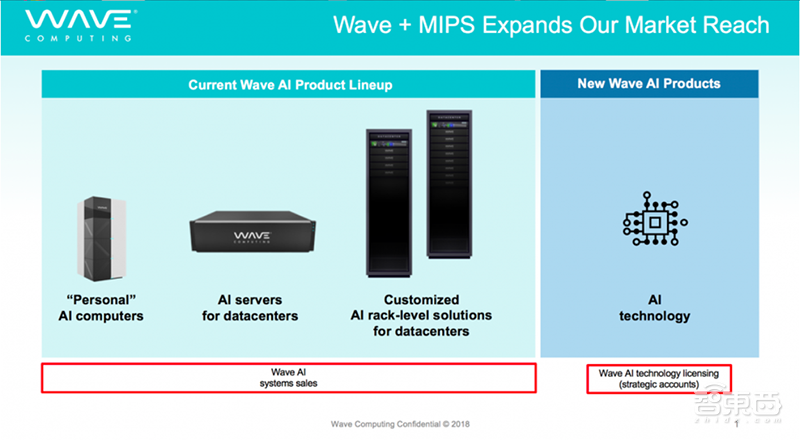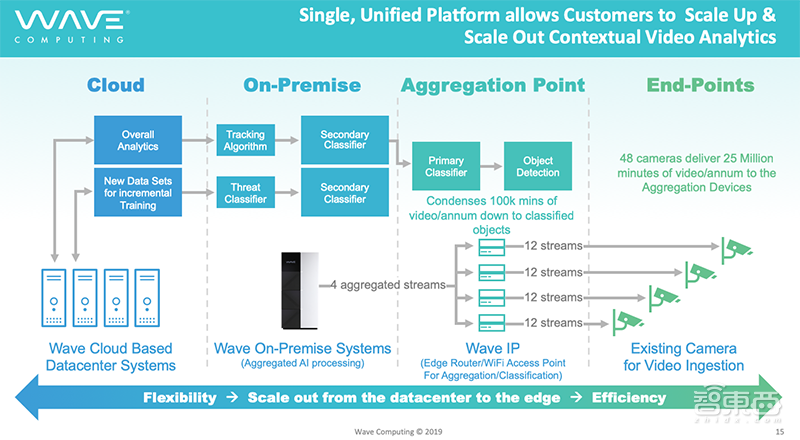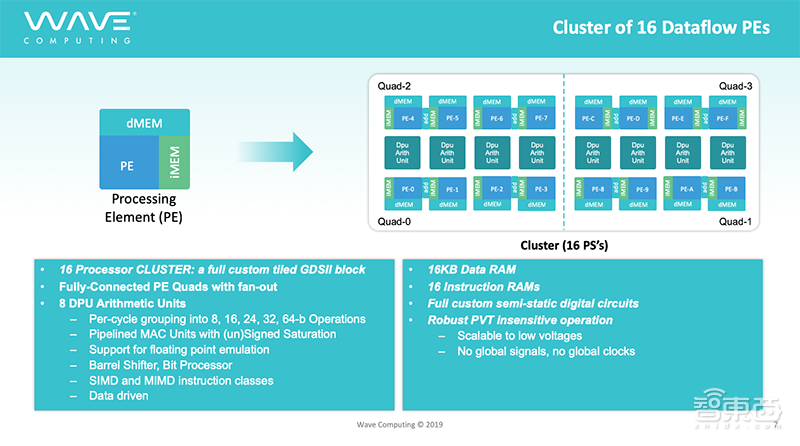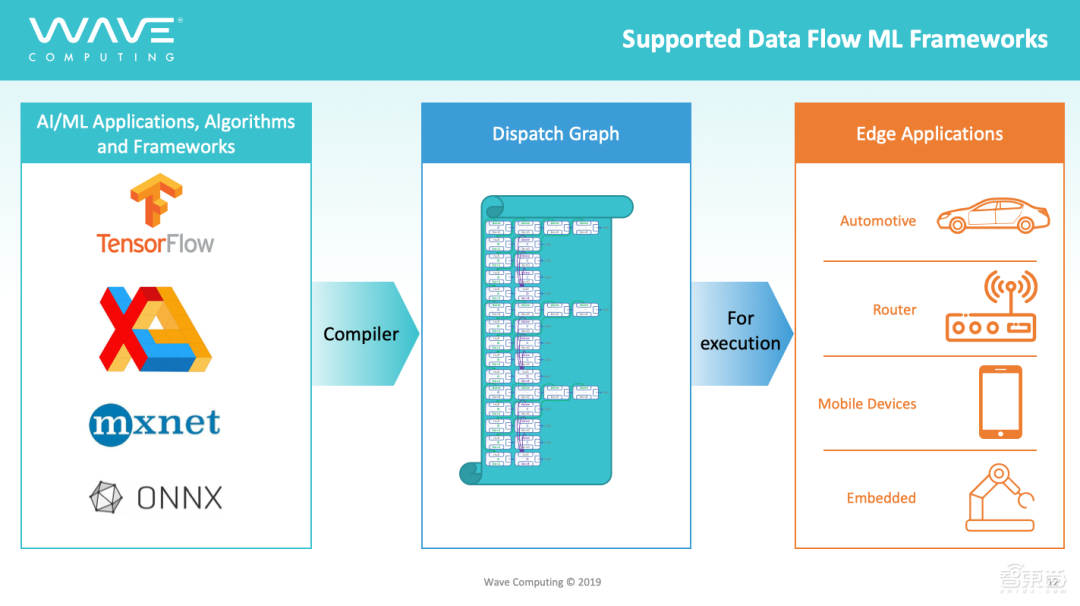AI chip market is entering a period of integration?
Editor’s note: This article comes from the WeChat public account “Core stuff” (ID: aichip001)
Author: Xinyuan
Article source: SemiWiki
The core stuff April 20 news, according to foreign media Semiwiki, the US AI chip company Wave Computing is close to bankruptcy and has applied for bankruptcy protection.
We first interviewed a person in charge of the company that Wave Computing was not bankrupt, but only applied for bankruptcy protection and reorganized its assets. Not all employees have been laid off, but China has been closed. Wave Computing originally had more than 40 employees in China, but there are only a few left, which has little effect.
Wave Computing was founded in 2010 in Campbell, California, USA. It is one of the promising emerging companies in the field of artificial intelligence (AI) chips, focusing on the adoption of Dataflow drive (dataflow) technology and software dynamically reconfigurable processor (CGRA) architecture that implements dataflow technology break through the bottleneck of AI chip performance and versatility and accelerate AI deep learning calculations from the data center to the edge.
In June 2018, Wave Computing acquired MIPS, a veteran semiconductor IP company, planning to integrate its data flow architecture with its MIPS embedded RISC multithreading The combination of CPU core and IP provides the power for the next generation of AI.

01 CEO in two half a year
Wave Computing by Dado BanaFounded by Tao and Pete Foley. Banatao serves as chairman and is also the founder and managing partner of Tallwood Venture Capital.
In December 2018, the company announced that it had completed US $ 86 million in Series E financing, and the cumulative financing amount has exceeded US $ 200 million.
Wave Computing changed its position twice as CEO last year, and its current CEO is Sanjai Kohli, in September 2019 from Art Swift, who only served for 4 months Take over as CEO.

▲ Wave Computing former CEO Art Swift
When EE Times interviewed Swift and asked why he left Wave, Swift refused to disclose details and only responded by saying: “I am with ( Wave) ‘s board of directors disagrees. “
Wave ’s new CEO Kohli was the founder and CTO of several startups, including SiRF (IPO, which was later acquired by CSR), WirelessHome (already Acquired by WMUX), TruSpan (acquired by SiRF) and Inovi (acquired by Facebook). According to people familiar with him, Kohli is a well-known technical expert in the field of GPS and telecommunications, but not necessarily in the field of AI.

▲ Wave Computing ’s current CEO Sanjai Kohli
Some analysts believe that Wave ’s AI data stream processor may not be much better than Nvidia or Graphcore unless Wave has a great advantage, Otherwise, it will be difficult to attract others to risk using their products and to allow investors to continue to inject capital.
02 Innovative architecture more flexible than GPU
Wave Computing provides a broad product line of system, chip, IP, and solution services from the data center to the edge, and develops software-based dynamic reconfiguration AI chip DPU (dataflow processing unit) with processor CGRA (Coarse grain reconfigurable array / accelerator) architecture.

Current mainstream AI chip architectures include CPU, GPU, FPGA, ASIC, etc. CPU, GPU, FPGA have certain versatility for different neural networks. The main disadvantage is that whether it is the system architecture itself, or the problem of insufficient data transmission channels and exchange capacity, etc., it will cause its efficiency to be relatively low, and actual energy efficiency. To the bottleneck.
Special chip ASIC is usually based on the technical idea of DSA (domain specific architecture), that is, the processor architecture optimized for specific application areas, including Google TPU Many cross-border core-making players adopt this idea. Compared with general-purpose chips, this solution can significantly improve the energy efficiency of specific applications, but its lack of versatility will cause its energy efficiency to vary greatly in the face of different algorithms.
There is also a new class of emergingThe architecture is software that can be dynamically reconfigured (or “software-defined chip”). This is also the technology led by the team led by Professor Wei Shaojun, director of the Institute of Microelectronics of Tsinghua University and chairman of the IC Design Branch of the China Semiconductor Industry Association, as early as ten years ago.
This type of technology genre uses software to dynamically control thousands of asynchronous processors in real time to form data with specific functions, parallel processing, and data. The driven computing pipeline makes full use of the computing power of the chip, minimizes data storage, transmission and exchange, and achieves better efficiency, versatility and scalability.

CGRA is suitable for large-scale asynchronous parallel computing. Its main advantage is to make the hardware more flexible to adapt to software and lower the threshold for AI chip development. Compared with CPU, GPU and FPGA, CGRA achieves a good overall balance in programmability and performance, and energy efficiency can be close to ASIC level.
Compared with FPGAs that are difficult to program, CGRA supports high-level programming languages such as C, Python, and JAVA, making it easier for programmers to get started.

As early as 2014-2015, Wave Computing realized that CGRA is very suitable for implementing data flow driven dataflow technology architecture, and its AI chip DPU (Dataflow Processing Unit) ) Product direction is now established.
Dataflow technology architecture chip DPU solution is not only suitable for data centers, but also has unique value in edge computing. On the one hand, AIThe demand for management capabilities is getting higher and higher; on the other hand, AI is no longer just a single model of processing, it needs to support multiple different neural networks at the same time, and the requirements for processor versatility and energy efficiency are higher.
It is reported that Wave ’s single-chip solution DPU is very suitable for edge computing. It can guarantee better versatility and at the same price, Under the condition of power consumption, achieve higher energy efficiency, scalability and cost performance than GPU solutions.
Wave ’s first-generation DPU uses a 16nm process technology and runs at speeds above 6 GHz. It is already commercially available. Last year, Wave executives revealed that they are working with Broadcom to develop a new generation of 7nm DPU, and plan to introduce 64-bit MIPS multi-threaded CPU and use high-bandwidth memory HBM (High Band Memory).
03 Suspended MIPS open plan
In addition to research and development of AI chips, Wave Computing also has a compelling line of business-MIPS.
MIPS was the most used processor architecture in the world before 1999, and was once one of the three major processor architectures with the same name as x86 and Arm First, it is a pity that it is showing signs of decline in the ecological contest. After being sold for many times, it was returned to Wave Computing in June 2018.
On the one hand, around the goal of accelerating AI computing, Wave plans to integrate MIPS and AI; on the other hand, Wave announced MIPS in December 2018 Open plan to expand the ecology of MIPS through open licensing. However, by the end of 2019, the MIPS opening plan was announced to be terminated.
Wave Computing wrote in an e-mail to registered MIPS Open users: I regret to announce the closure of the MIPS open plan since November 14, 2019 Number effective.
Wave will no longer offer free MIPS open componentsDownloads, including MIPS architecture, cores, tools, IDEs, simulators, FPGA packages, and / or any related software code or computer hardware, which are licensed under (i) MIPS Open Architecture License Agreement (ver), ( ii) MIPS open core license agreement version 1.0 (for the microAptiv UC Core); (iii) MIPS open core license agreement version 1.0 (for the microAptiv UP Core); and / or (iv) MIPS open FPGA license agreement version 1.0 (collectively “MIPS Open Components”). In addition, all MIPS account opening will be closed from the effective date.
The email emphasized that the current event license and previous downloads will not be affected, but Wave no longer authorizes any third-party certification.
The reasons behind Wave Computing ’s various twists and turns in the past year are not yet clear. SemiWiki believes that the artificial intelligence market is booming, and as many companies come up with innovative methods, any new market will usually experience this growth and then enter the integration stage. Does Wave Computing’s message indicate that we have entered the integration phase? Time will prove everything.